The restaurant is the epitome of modern Japanese elegance. Crisp, white tablecloths are perfectly ironed, contrasting beautifully with the minimalist black decor. In lesser hands, this aesthetic might feel cold, but here it feels intentional—subtle and refined, like the perfect frame that enhances the true masterpiece: the food.
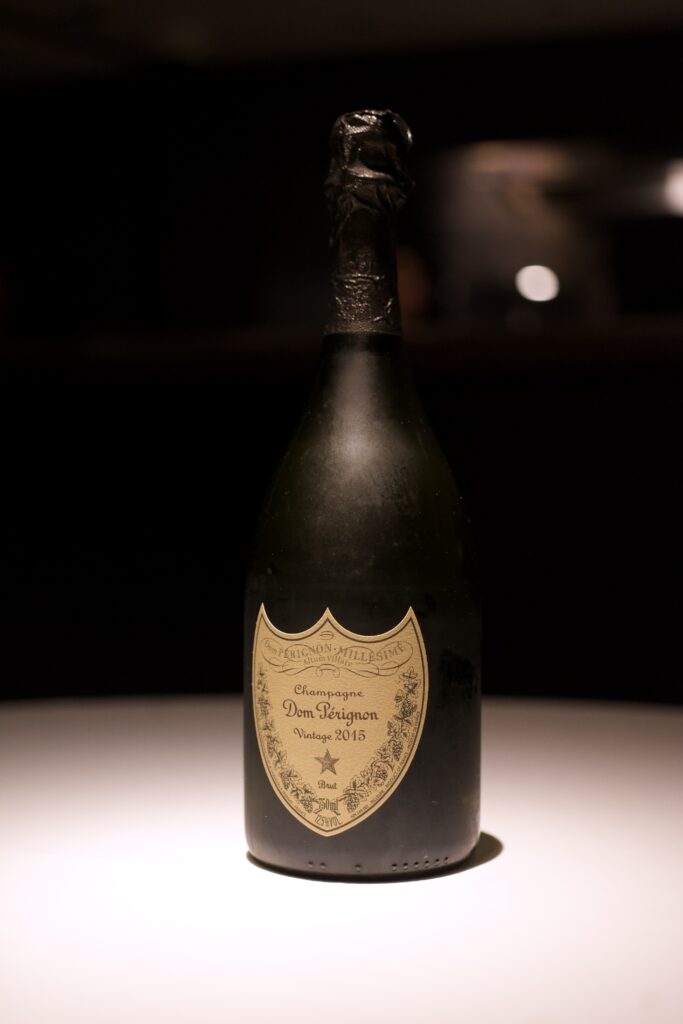
From the moment we sat down, the tone was set. The sommelier poured us a generous glass of 2015 Dom Pérignon, which was thoughtfully topped up throughout the evening. It was a warm, indulgent gesture that made us feel more than welcome.
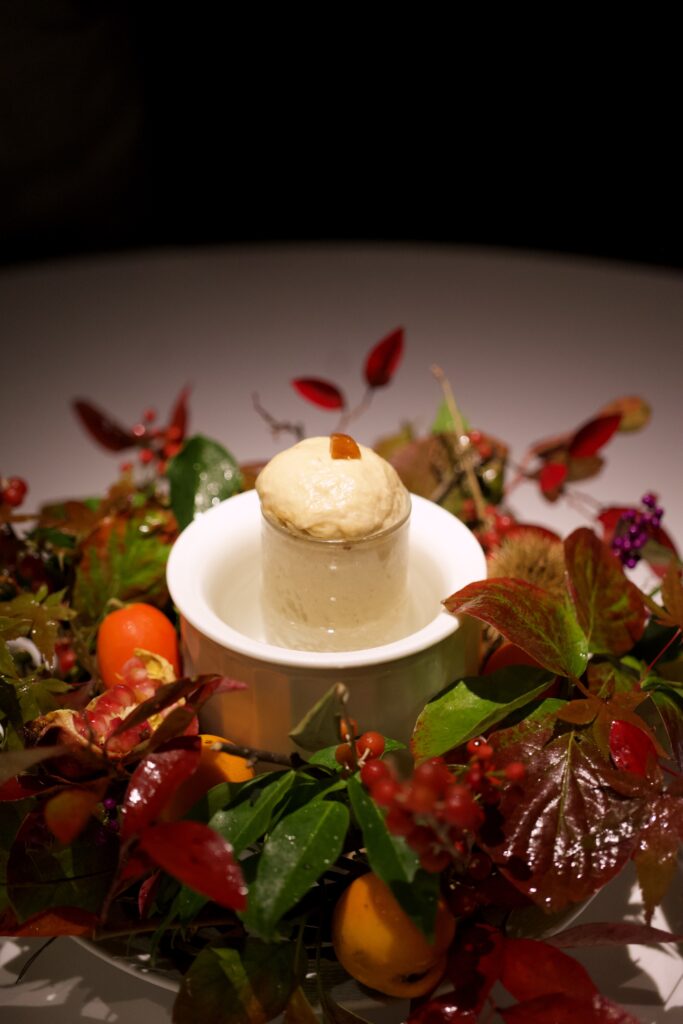
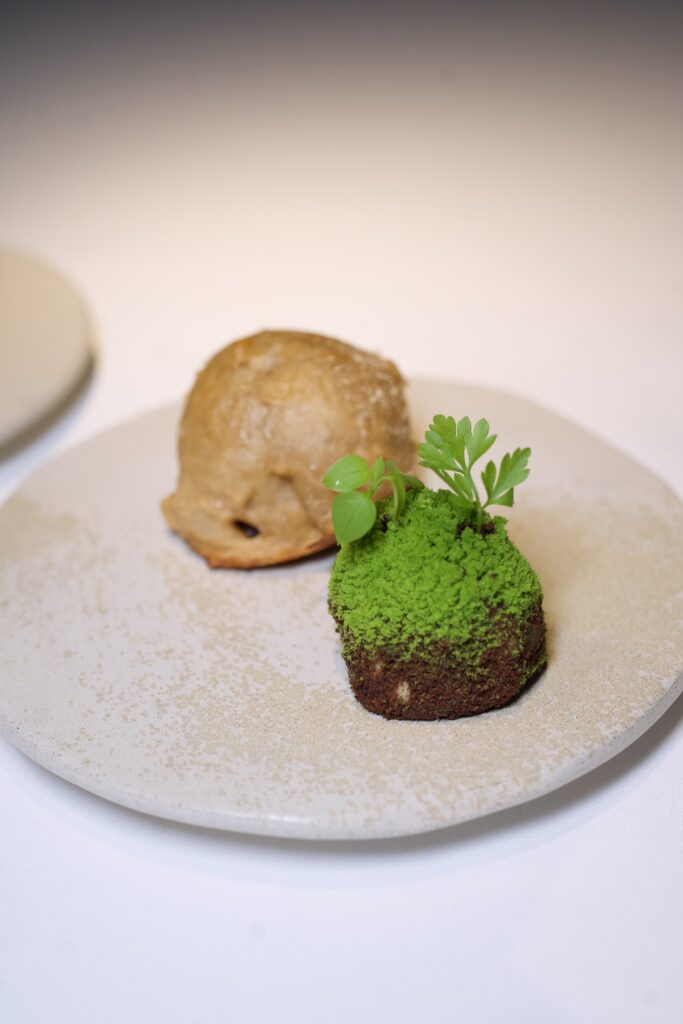
Our first introduction to the Narisawa experience came with the “Bread of the Forest.” Initially presented as dough, it was baked tableside in a searingly hot ceramic bowl for 15 minutes. The result was a soft, richly flavored bread paired with an umami-packed spread. The same people that rave about Narisawa also often say it’s the best bread they’ve ever tasted. While I wouldn’t go that far, the ceremony of its preparation elevated it into an experience worthy of such acclaim.
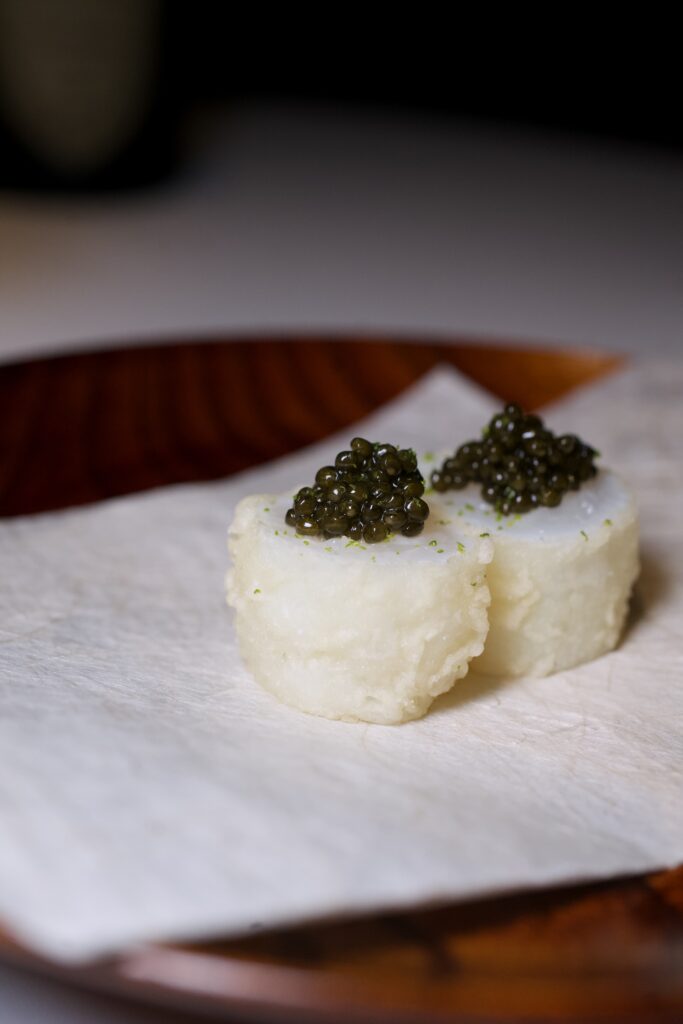
The true first dish, however, was squid from Kanazawa. Encased in a delicate tempura crust and crowned with caviar, it was a dish that whispered sophistication. The flavors were pristine, and the touch of yuzu zest added just the right amount of contrast. It was a preview of what was to come—classic techniques executed with unparalleled precision and just enough unexpected twists to keep you enchanted.
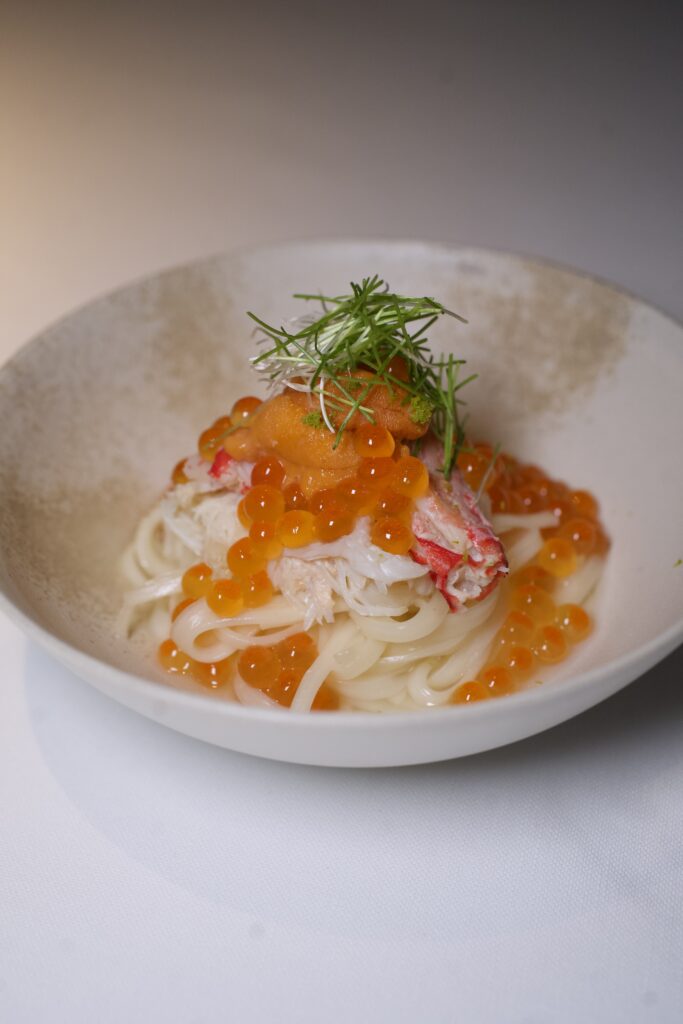
It’s almost impossible to choose highlights from an evening where every course was extraordinary, but one dish stood out as particularly unforgettable. It was hairy crab season, and the crab was served with salmon roe, sea urchin, and chilled soba noodles. These are powerful ingredients that can easily overwhelm, yet here they were perfectly restrained. Each bite was a study in balance, with textures and flavors harmonizing like a perfectly orchestrated symphony.
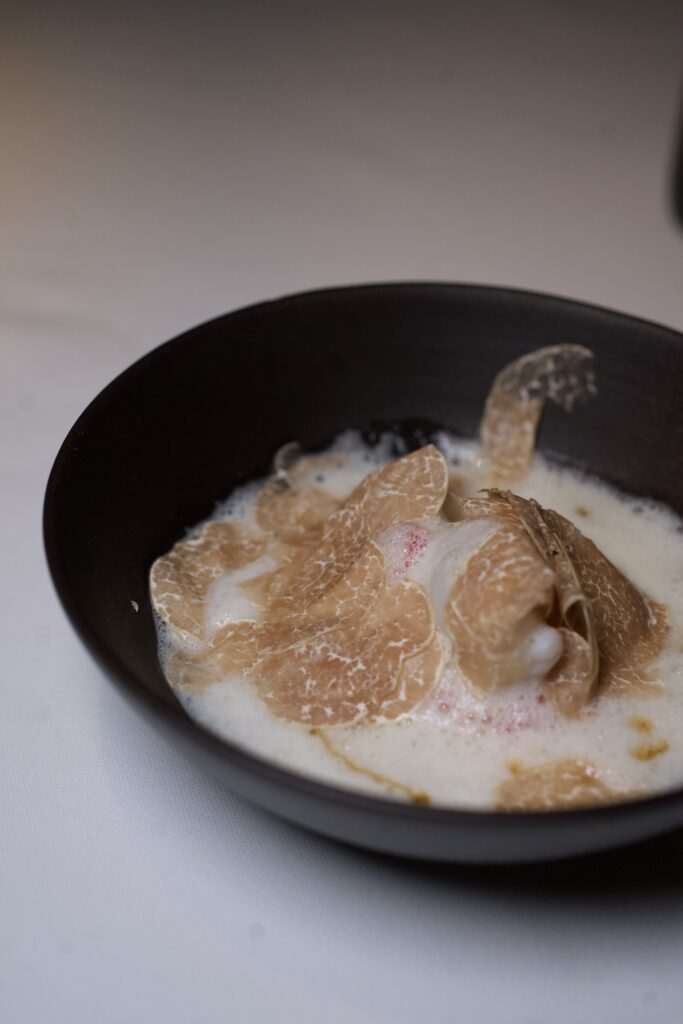
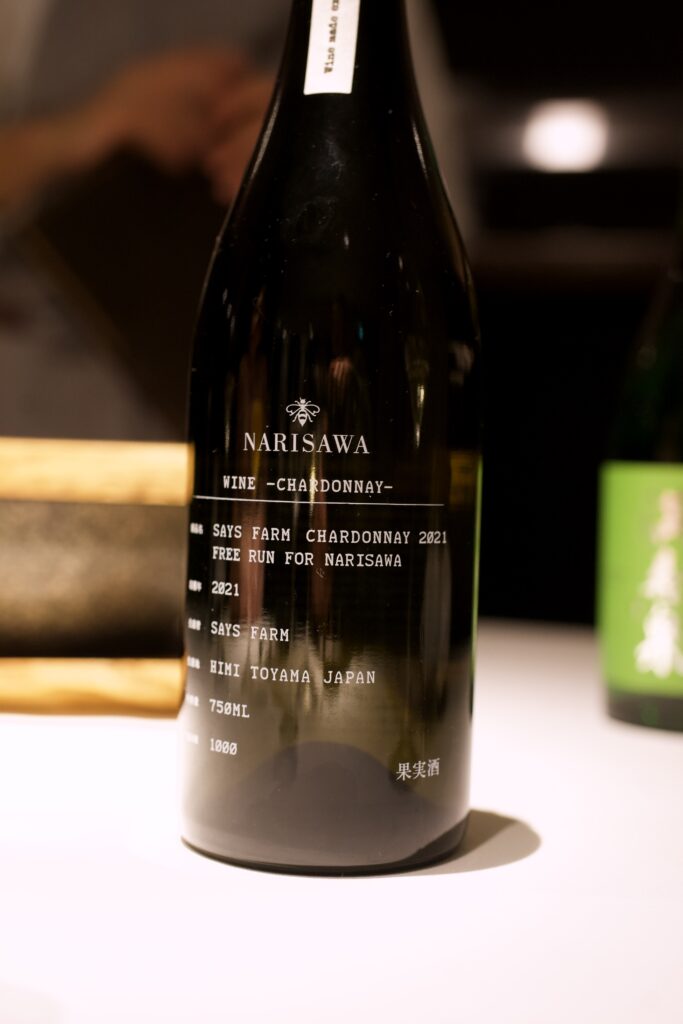
While Japan is at the heart of Narisawa’s philosophy, exceptions are made for certain seasonal treasures. White truffles, for instance, made a luxurious appearance alongside langoustine. This was no ostentatious display of truffle for truffle’s sake. Instead, the dish was a masterclass in subtlety—earthy, umami-rich, and deeply satisfying. Appropriately, this was the only course paired with wine; the rest of the meal celebrated sake as its companion.
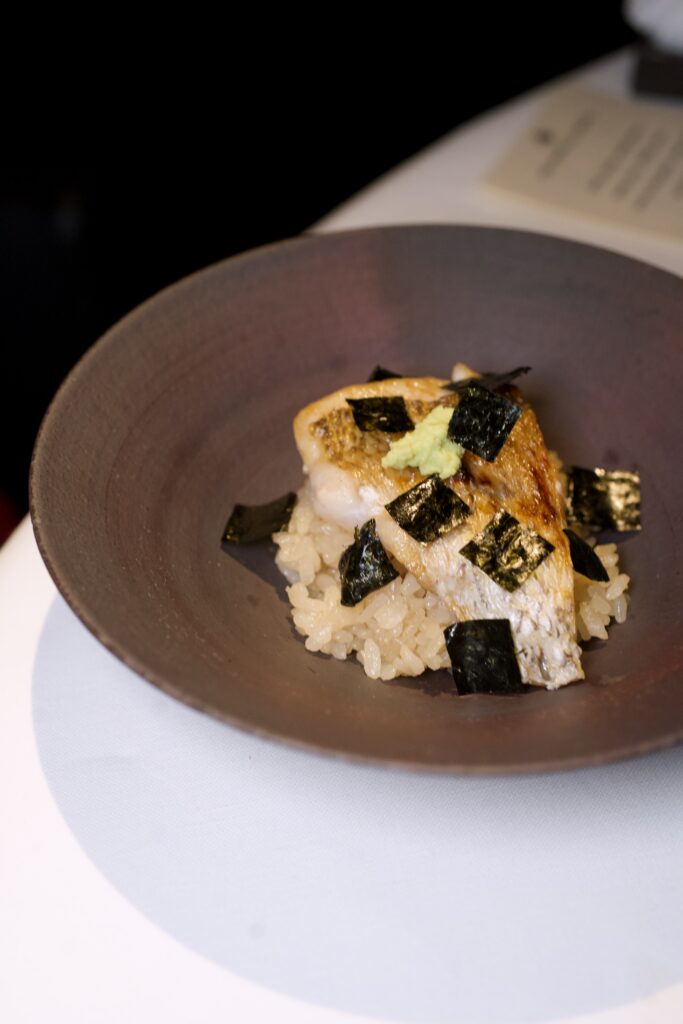
Then came the sea bass, easily the finest I’ve ever had. Imagine the essence of sea bass distilled to its most exquisite form—a Ferrari version of the fish you might say. It was served simply, accompanied by Kyoto rice, allowing the quality of the ingredients to shine without distraction and shined they did.
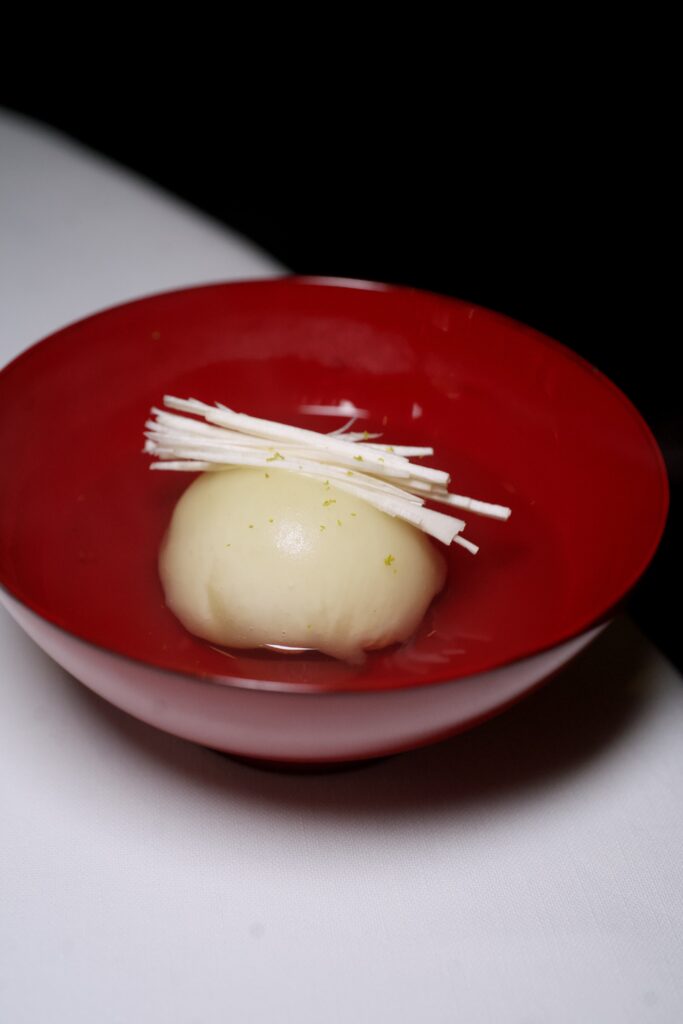
In Japan, Narisawa is often described as innovative, but from a European perspective, I would call it classic. Take, for example, the conger eel soup. A clear broth accented with Jerusalem artichoke and maitake mushroom, it was the epitome of Japanese elegance. The flavors were delicate yet profound, like the understated beauty of traditional Japanese attire—never loud, never excessive, but always deeply impactful.
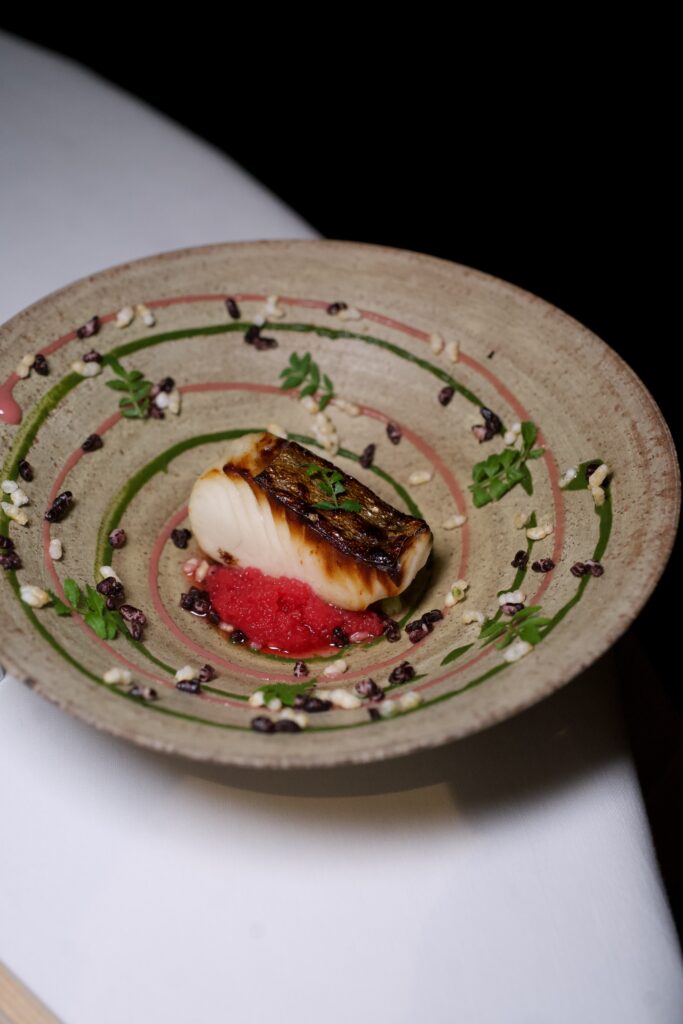
As the savory courses drew to a close, two final dishes left a lasting impression. First was the “Rich Harvest,” an almost theatrical presentation that began with a plate concealed beneath a simple white cloth. Revealing it unveiled a subtle wisp of smoke, two perfect sauces, puffed rice, herbs, and at the center, a flawlessly smoked Spanish mackerel. The dish was as rich in flavor as it was in artistry.
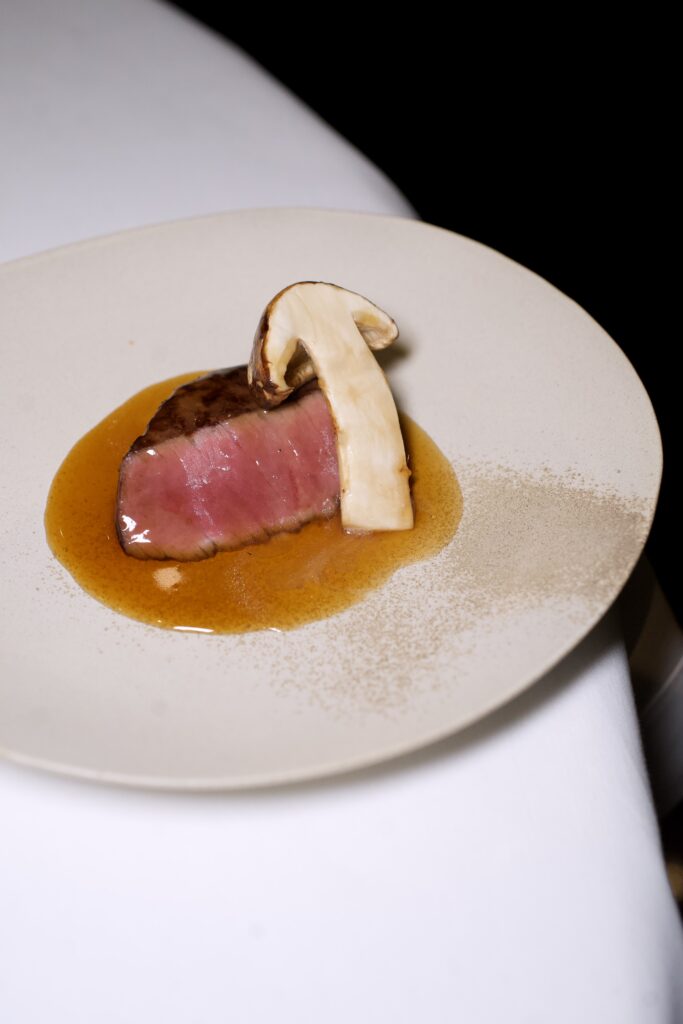
Then came the wagyu. I’ve had great steak in New York, Argentina, and the Basque Country, but this was something entirely different. Cooked at a low temperature and paired with maitake mushroom and a honey-like sauce, it defied every expectation. Where most great steaks are robust and masculine, this one was delicate, almost feminine—soft, tender, and deeply nuanced. It might very well have been the best steak of my life.
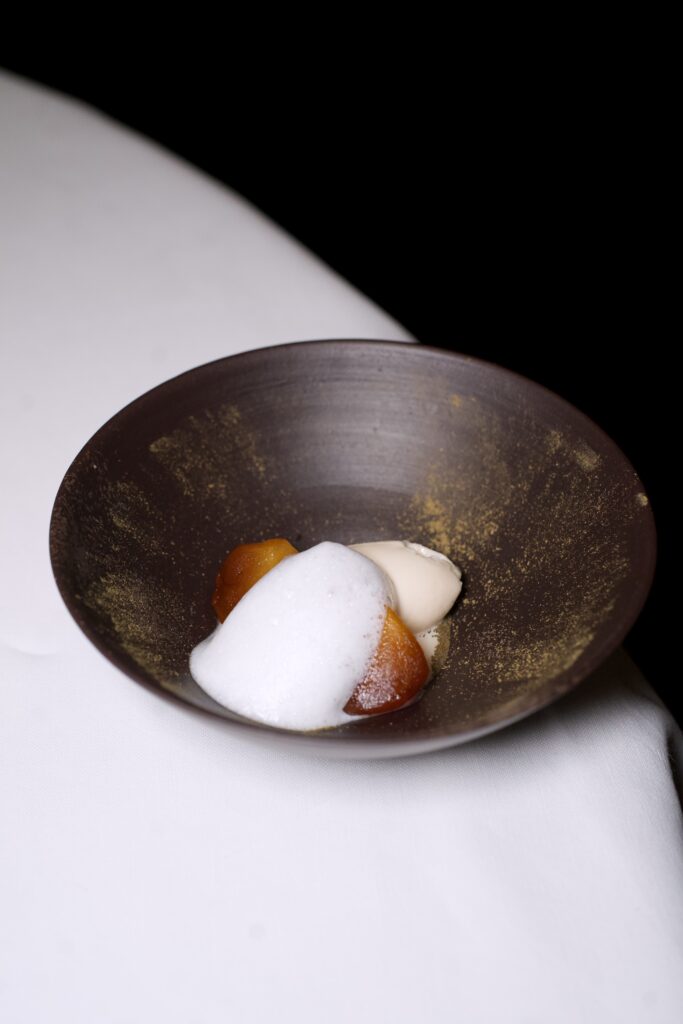
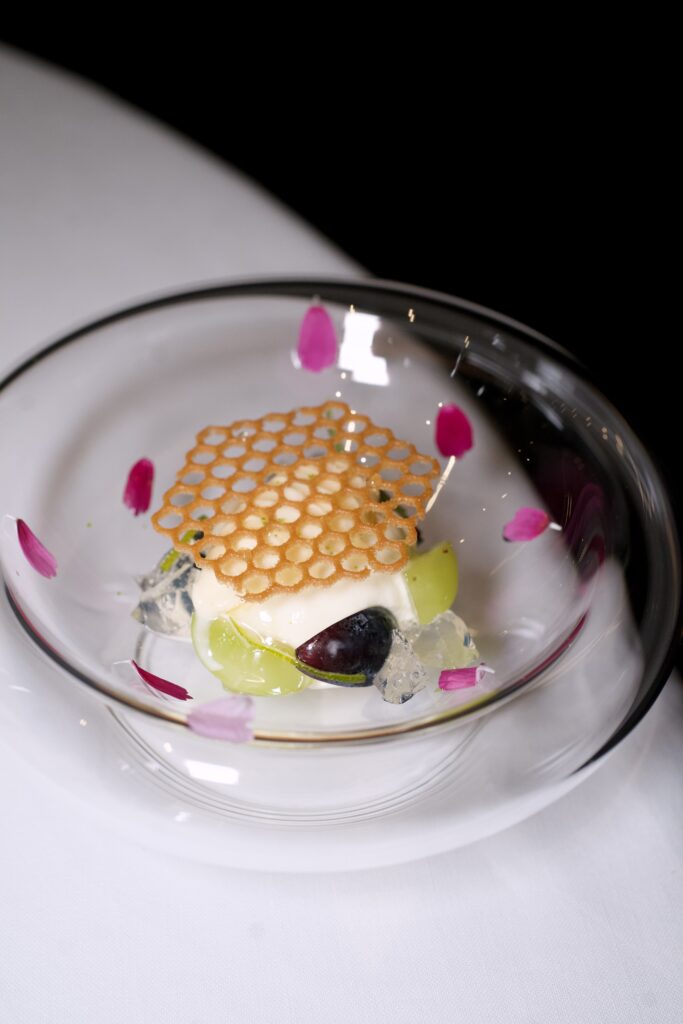
Desserts at Narisawa were a testament to how simplicity can be transformative. First, roasted apples served with koji ice cream and a hint of green tea. It was a dish I’ve seen countless times before, yet here, it felt as though I was tasting it for the first time. Elevated to levels I never thought possible. The second dessert was a modern creation of grapes and honey, offering a harmonious balance of texture and flavor.
From start to finish, my meal at Narisawa was one of the most extraordinary dining experiences of my life. It was sensual, deeply personal, and profoundly moving. Historically, I’ve gravitated towards restaurants in Japan that showcase technical wizardry, as I’ve never fully embraced the quiet beauty of traditional kaiseki. But Narisawa bridged that gap for me. It celebrated simplicity and reverence for ingredients, yet there was something more—something almost intangible.
Perhaps it’s best not to overanalyze. Some experiences are meant to be felt, not explained, and Narisawa is one of them. Few restaurants have touched me on such an emotional level, but this one truly did.
Thank you, Leo and Yoshihiro, for an unforgettable and humbling evening

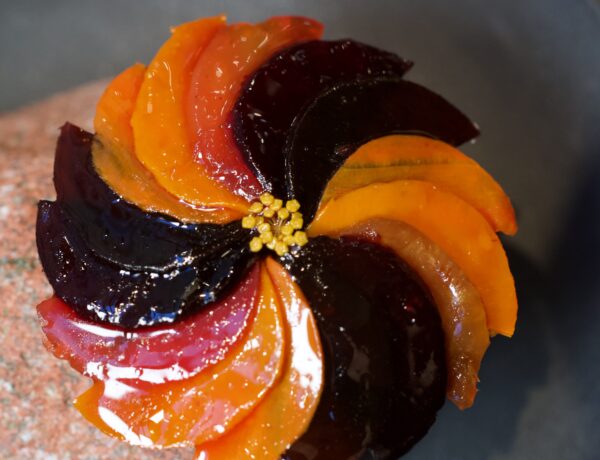
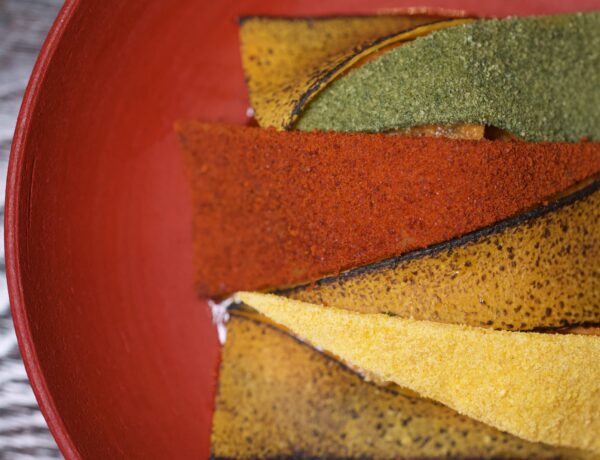
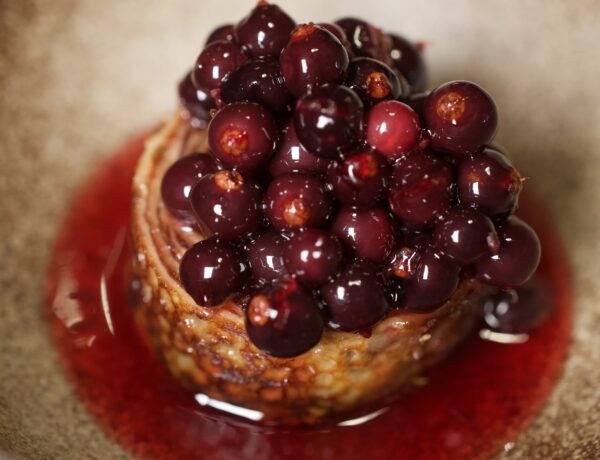
No Comments